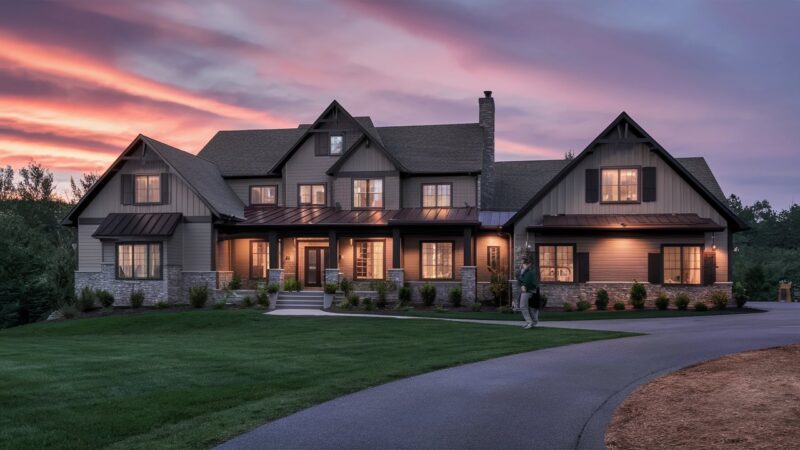Optimizing energy and efficiency is not just a trend but a necessity in today’s world. Whether you’re working on a kitchen remodeling in Spanish Fork or designing a new office space, energy-efficient solutions can make a significant difference. This blog will guide you through practical tips and strategies to enhance energy efficiency in your custom projects, ultimately saving you money and promoting sustainability.
Why Energy Efficiency Matters
Energy efficiency is crucial for several reasons. First, it helps reduce energy costs, which can be significant in large-scale custom projects. Second, it minimizes environmental impact by reducing carbon emissions. Lastly, energy-efficient solutions often lead to improved performance and longevity of the project. But how can you achieve these benefits? Read on to find out.
Conduct an Energy Audit
Conducting an energy audit is one of the first steps in optimizing energy efficiency. This process involves examining current energy usage and identifying areas for improvement.
Benefits of an Energy Audit
An energy audit can reveal hidden inefficiencies that are costing you money. By identifying these issues early, you can decide where to invest in energy-efficient solutions.
DIY vs. Professional Audits
While you can perform a basic energy audit yourself, a professional audit will provide a more comprehensive analysis. Professionals use specialized tools and have the expertise to identify issues you might overlook.
What to Look For
Look for areas where energy is being wasted, such as outdated appliances, poor insulation, or inefficient lighting. Make a list of these issues to address later in your project.
Choose Energy-Efficient Materials
The materials you choose can have a significant impact on energy efficiency. Opt for materials that offer good insulation and are sourced sustainably.
Insulation Materials
Proper insulation is key to maintaining a stable indoor temperature. Materials like fiberglass, cellulose, and spray foam offer excellent insulation properties.
Sustainable Sourcing
Choose materials that are sustainably sourced to reduce your environmental impact. Bamboo, reclaimed wood, and recycled steel are great options.
Longevity and Durability
Energy-efficient materials often last longer, reducing the need for frequent replacements and ongoing maintenance.
Implement Smart Technology
Smart technology can significantly enhance the energy efficiency of your custom project. From smart thermostats to automated lighting systems, the possibilities are endless.
Smart Thermostats
Smart thermostats learn your schedule and adjust the temperature accordingly, ensuring that energy is not wasted when it’s not needed.
Automated Lighting
Automated lighting systems can turn lights on and off based on occupancy, reducing unnecessary energy consumption.
Energy Management Systems
Energy management systems provide real-time data on energy usage, allowing you to make informed decisions and adjustments.
Optimize HVAC Systems
Heating, ventilation, and air conditioning (HVAC) systems are major energy consumers. Optimizing these systems can lead to significant energy savings.
Regular Maintenance
Regular maintenance ensures that HVAC systems operate efficiently. Clean filters, check for leaks, and schedule professional tune-ups.
Energy-Efficient Models
Invest in energy-efficient HVAC models that consume less energy while providing optimal performance.
Zoning Systems
Zoning systems allow you to control the temperature in different areas separately, ensuring that energy is not wasted heating or cooling unoccupied spaces.
Use Renewable Energy Sources
Incorporating renewable energy sources can drastically reduce energy consumption and lower utility bills.
Solar Panels
Solar panels convert sunlight into electricity, providing a sustainable energy source. They can be installed on rooftops or other sunny areas.
Wind Turbines
Wind turbines generate electricity from wind energy. They are ideal for locations with consistent wind patterns.
Geothermal Systems
Geothermal systems use the earth’s natural heat to regulate indoor temperatures, providing an efficient and sustainable energy solution.
Focus on Water Efficiency
Water efficiency is an often overlooked aspect of energy optimization. Reducing water usage can also reduce the energy required for heating and pumping water.
Low-Flow Fixtures
Install low-flow fixtures in kitchens and bathrooms to reduce water consumption without sacrificing performance.
Water-Saving Appliances
Opt for energy-efficient appliances like dishwashers and washing machines that use less water and energy.
Rainwater Harvesting
Collect rainwater for non-potable uses like irrigation and toilet flushing, reducing the demand on your main water supply.
Engage with the Community
Building a community around energy-efficient practices can provide additional support and resources for your custom projects.
Join Local Initiatives
Many communities have local initiatives focused on sustainability and energy efficiency. Joining these groups can provide valuable insights and resources.
Share Your Success
Share your energy optimization successes with others. This not only helps spread awareness but can also inspire others to adopt similar practices.
Continuous Learning
Stay updated on the latest trends and technologies in energy efficiency. This will ensure that your custom projects remain cutting-edge and sustainable.
Conclusion
Optimizing energy and efficiency in custom projects is not just beneficial; it’s essential. From conducting energy audits to implementing smart technology, there are numerous ways to enhance energy efficiency. By choosing the right materials, optimizing HVAC systems, and incorporating renewable energy sources, you can create projects that are both cost-effective and environmentally friendly.





